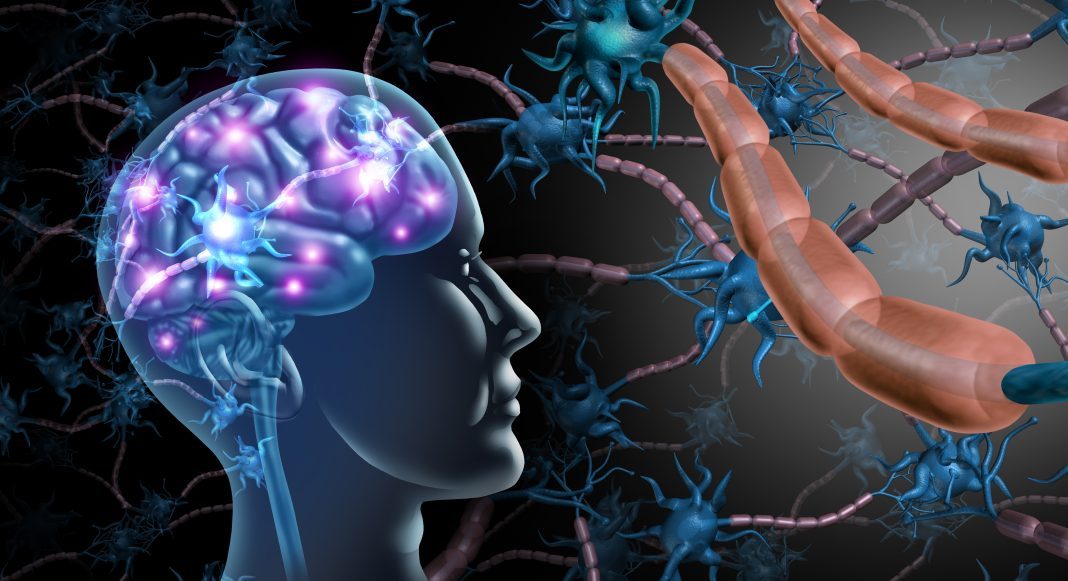Scientists at Oregon Health & Science University (OHSU) have developed a compound that promotes repair of the nerve cell-protective myelin sheath that is damaged in diseases such as multiple sclerosis (MS). In a paper published in Glia, an international research team led by the OHSU researchers reports on successful tests with the modified flavonoid compound, known as S3, in culture and in live mice. They are now evaluating S3 in a rare population of macaque monkeys housed at the Oregon National Primate Research Center at OHSU, which spontaneously develops a disease that is similar to MS in humans.

“I think we’ll know in about a year if this is the exact right drug to try in human clinical trials,” said senior study author Larry Sherman, PhD, an OHSU professor in the division of neuroscience at the primate center. “If it’s not, we know from the mouse studies that this approach can work. The question is, can this drug be adapted to bigger human brains?” Sherman and colleagues report on their in vitro and rodent studies in a paper titled, “A Modified Flavonoid Accelerates Oligodendrocyte Maturation and Functional Remyelination.”
The myelin sheath that surrounds nerve cell axons is critical for normal nerve cell function and the transmission of electrical signals. Myelin is produced by myelin-forming oligodendrocytes (OLs), which mature from oligodendrocyte progenitor cells (OPCs).
Damage to myelin is characteristic of diseases such as MS, but also occurs in stroke, brain injuries, and in some forms of dementia such as Alzheimer’s disease. Some studies have suggested that a delay in nerve cell myelination due to the failure of OPCs to mature into myelin forming OLs could be responsible for poor myelination in both the adult brain and in infants born prematurely, leading to brain damage or cerebral palsy. Research has also indicated that the ability to activate OPC maturation could represent a therapeutic strategy for promoting remyelination. “Thus, identifying the mechanism underlying the inhibition of OPC maturation would provide novel targets for therapies aimed at accelerating myelination or remyelination,” the authors wrote.
Back in 2005 the Sherman lab had discovered that hyaluronic acid (HA) accumulates in the brains of patients with MS, and that this was linked with the OPC maturation. Subsequent studies led by the Sherman lab also showed that in MS, the HA is broken down by hyaluronidase enzymes into smaller fragments. Working with Stephen Back, MD, PhD, a professor of pediatrics in the OHSU School of Medicine, Sherman discovered that the HA fragments generated by hyaluronidase activity act to block OPCs from maturing into OLs. However, as the researchers acknowledged, “The specific hyaluronidase or hyaluronidases that generate HA digestion products that block OPC maturation are unknown.”
The finding that the HA fragments block OPC maturation into myelin-producing OLs prompted the researchers to explore how they might block hyaluronidase activity as a potential approach to promoting remyelination. Over the past decade, the international OHSU-led collaborators have been working to develop a compound that might neutralize the hyaluronidase in the brains of patients with MS and other neurodegenerative diseases, and so reactivate the ability of the progenitor cells to mature into myelin-producing oligodendrocytes.
There are already compounds known that can block hyaluronidase enzymes, one of the most potent, and well characterized of which is known as Vcpal (L-ascorbyl 6-palmitate; also called ascorbate 6-hexadecanoate). Studies in laboratory-grown cells have shown that Vcpal can promote OPC maturation, but only when used at relatively high concentrations. The compound is also not highly specific, and acts on other types of enzymes. “It is therefore critical to utilize alternative approaches to test if there is a specific role for hyaluronidases in inhibiting OPC maturation and either myelination or remyelination,” the team pointed out.
In the study published in Glia, the researchers described in vitro studies confirming that “hyaluronidase activity prevents OPC maturation and blocks myelination or remyelination.” They also described development of a modified flavonoid, S3, which is based on a known flavonoid, apigenin, and which may represent a more promising clinical candidate. Their experiments showed that S3 was a more selective inhibitor of hyaluronidase activity than Vcpal, and was highly specific.
Encouragingly, S3 reversed the effects of HA in holding back growth of oligodendrocytes and promoted functional remyelination in both cells in brain cell culture models, and in mice. “ … we show that blocking hyaluronidase activity with this modified flavonoid accelerates OPC maturation in a slice culture model of perinatal white matter injury and promotes functional remyelination in a model of adult demyelination,” they wrote. “These findings indicate that: (1) hyaluronidase activity within demyelinating lesions is sufficient to block OPC maturation and remyelination; (2) hyaluronidase activity from OPCs can generate sufficient HA digestion products to block their own maturation; and (3) that modified flavonoids which target hyaluronidase activity could be efficacious in treating conditions where myelination is delayed or where remyelination fails.”
The development is the culmination of years of research by lead study author Weiping Su, PhD, a senior scientist in the Sherman lab. “It’s not only showing that the myelin is coming back, but it’s causing the axons to fire at a much higher speed,” Sherman said. “That’s exactly what you want functionally.”
And as the authors pointed out, “Although we are the first to demonstrate that flavonoids can directly promote OPC maturation and remyelination, several flavonoids are reported to have neuroprotective activity as well as neuroimmunomodulatory activity … All together, these studies and the data presented here suggest that flavonoids have a wide range of potential therapeutic applications in the CNS, and that these activities can be enhanced through simple chemical modifications.”
The next phase of research involves testing, and potentially refining, the compound in macaque monkeys who carry a naturally occurring version of MS called Japanese macaque encephalomyelitis. The condition, which causes clinical symptoms similar to multiple sclerosis in people, is the only spontaneously occurring MS-like disease in nonhuman primates in the world.



